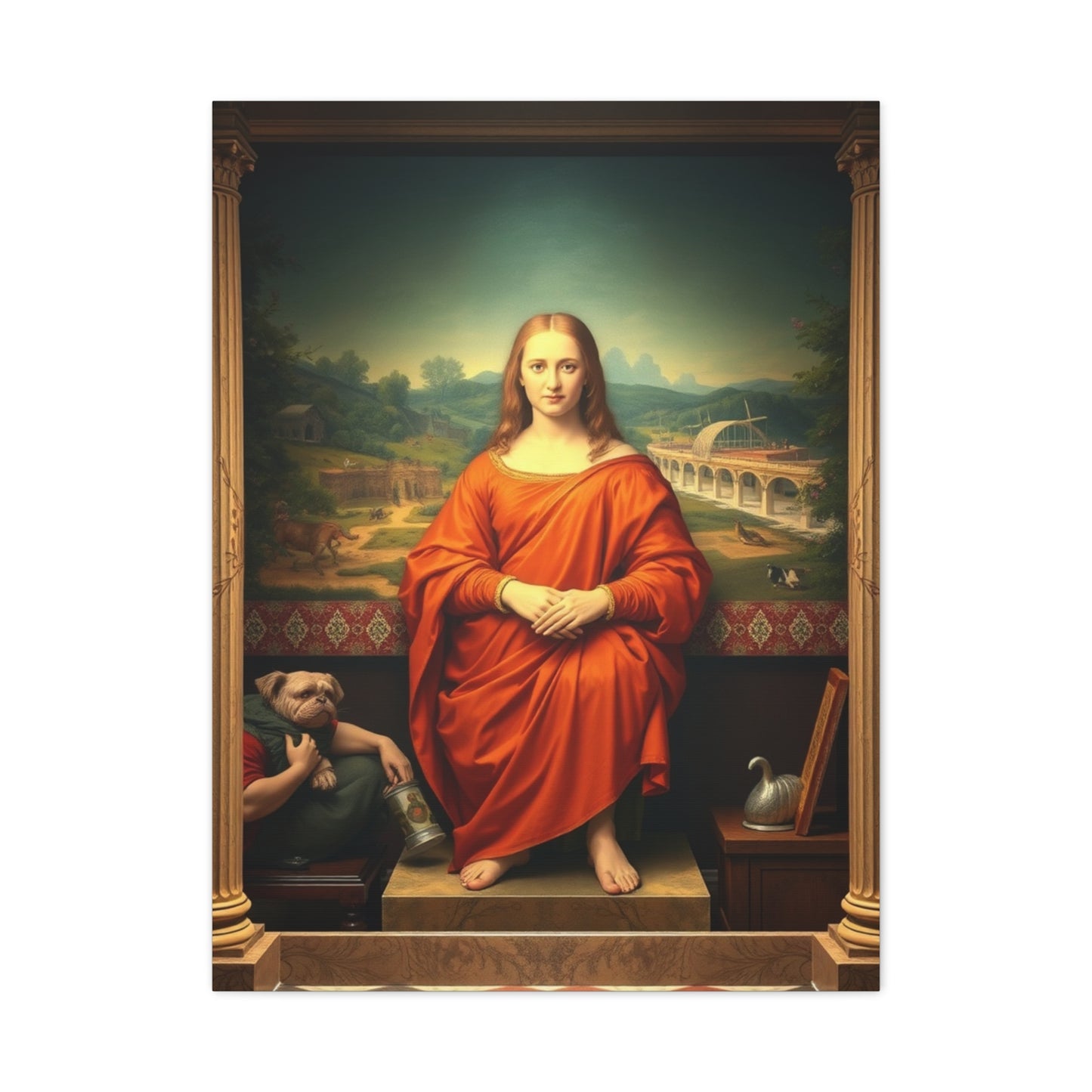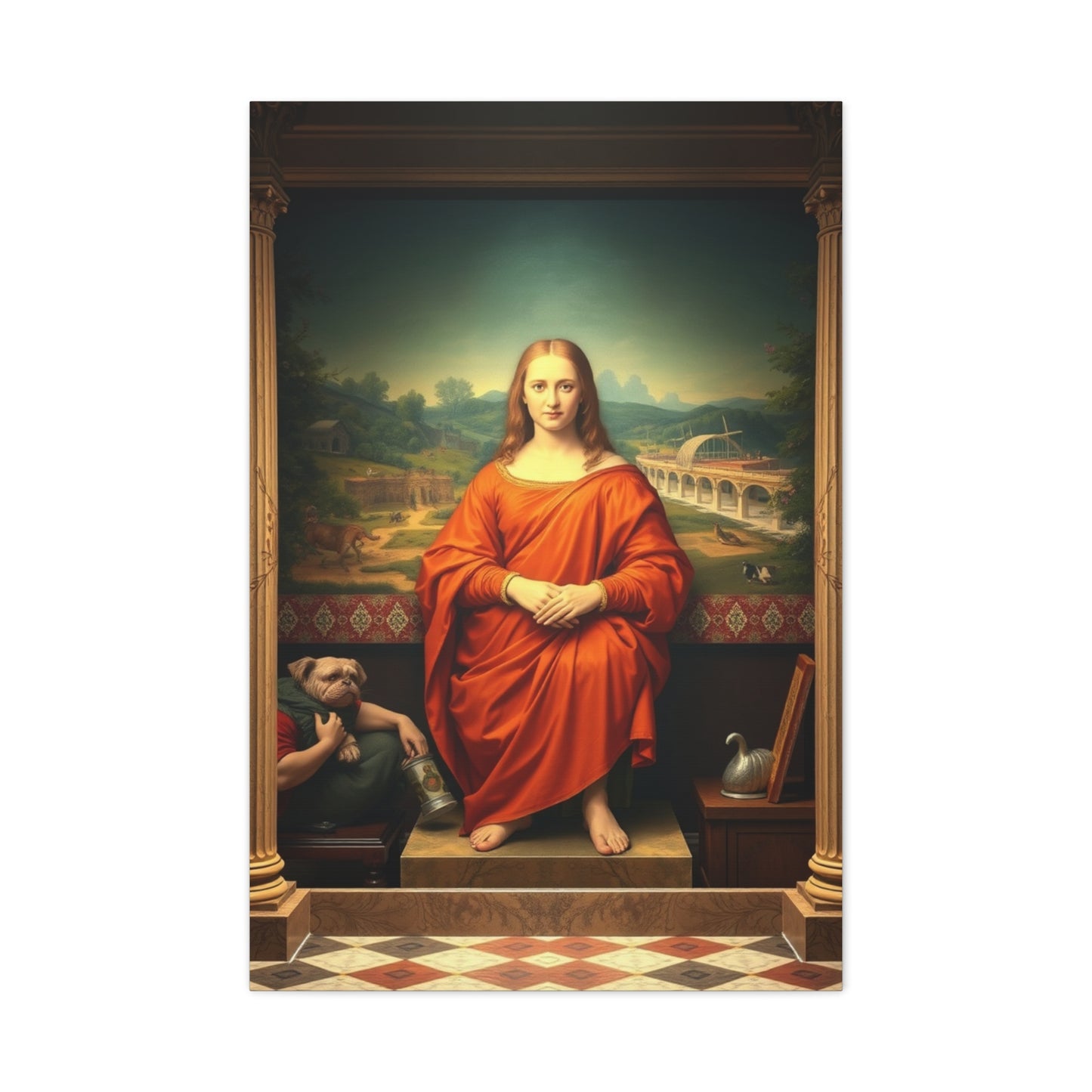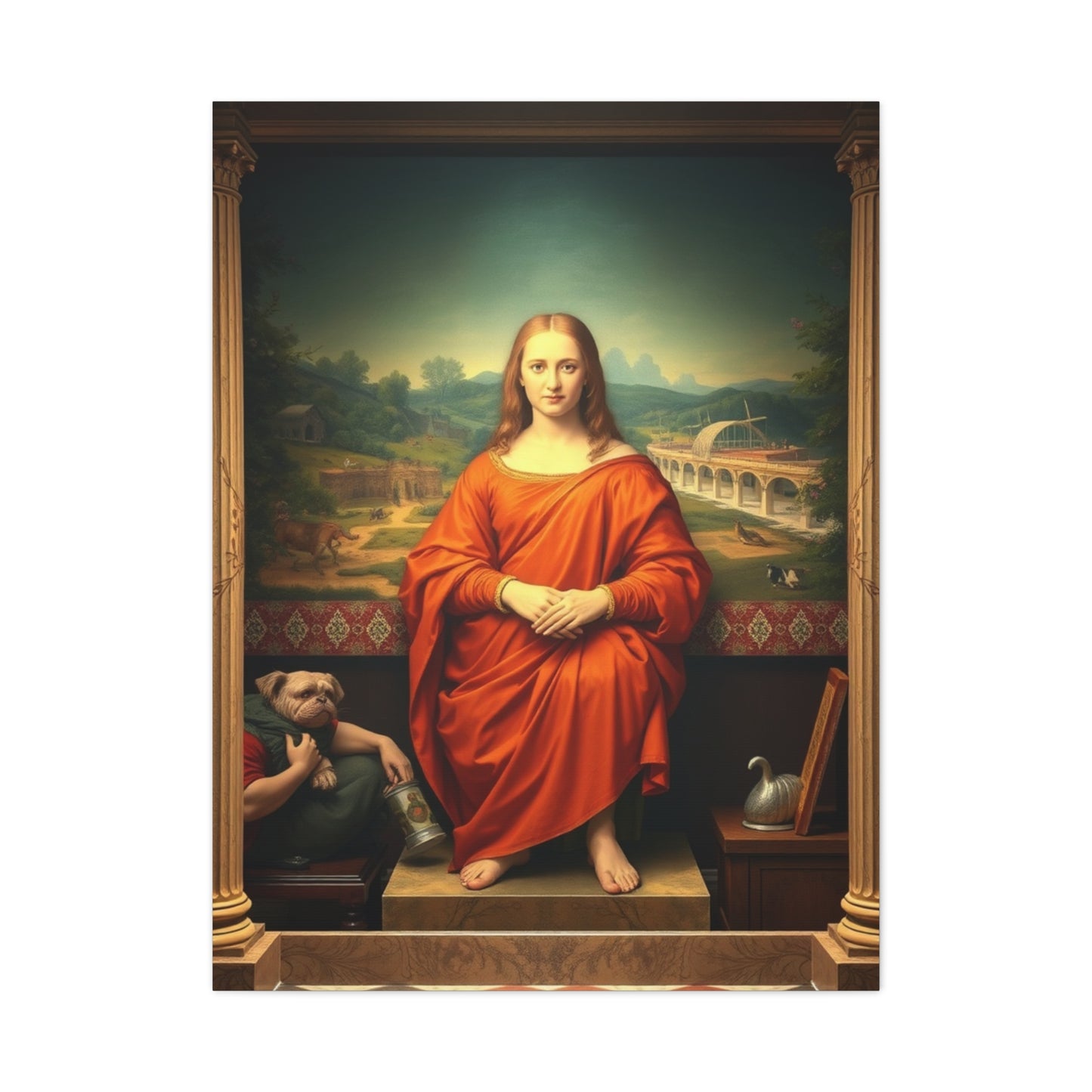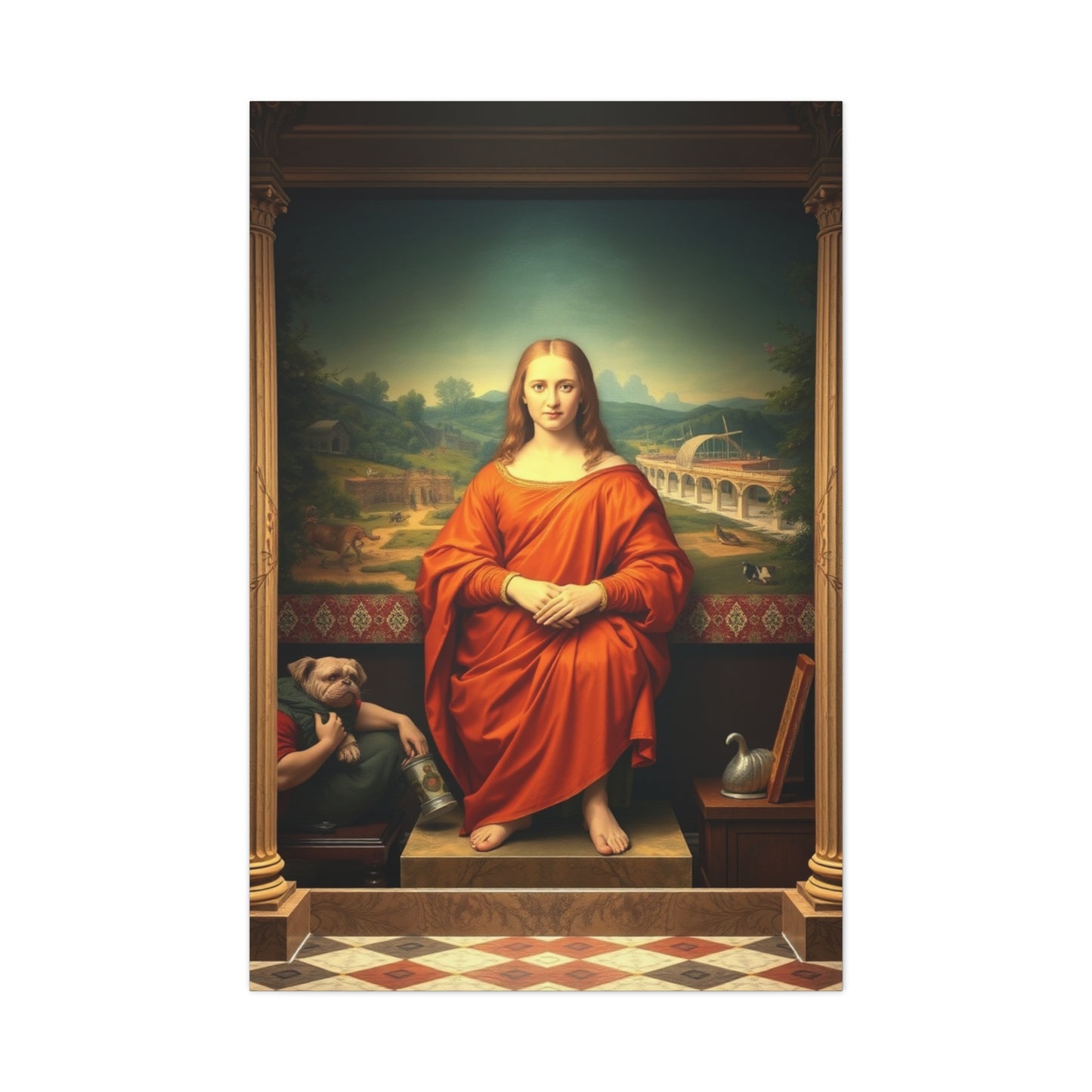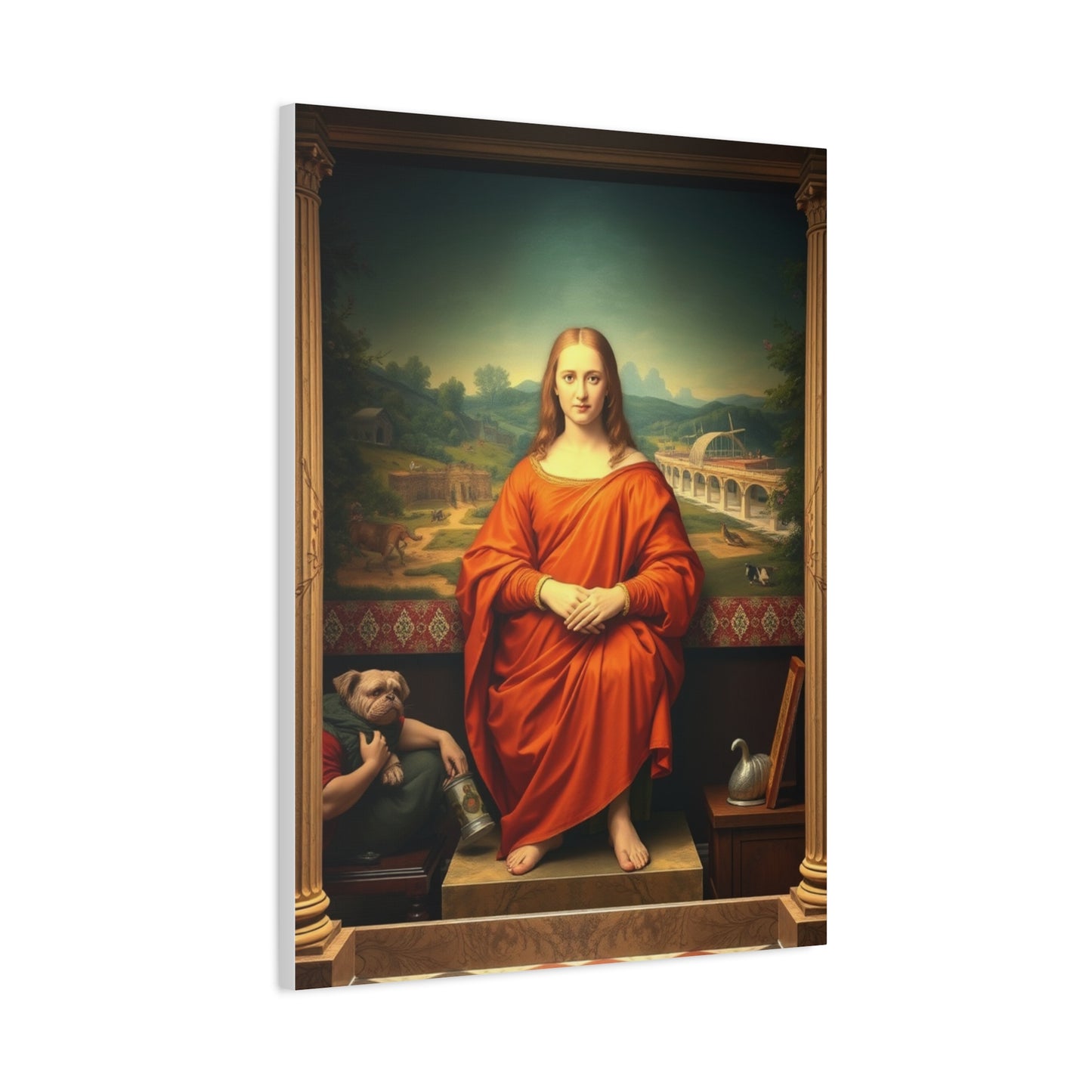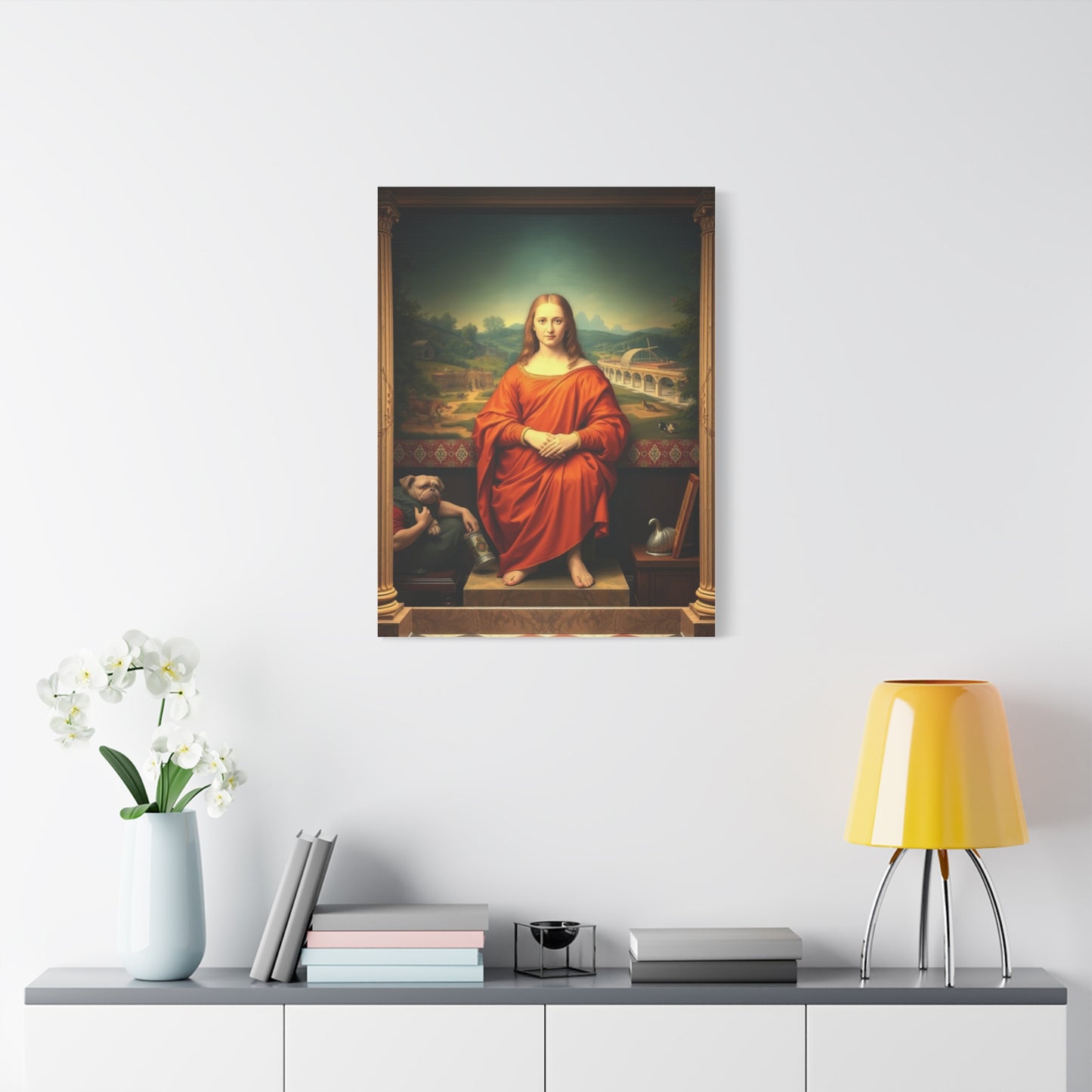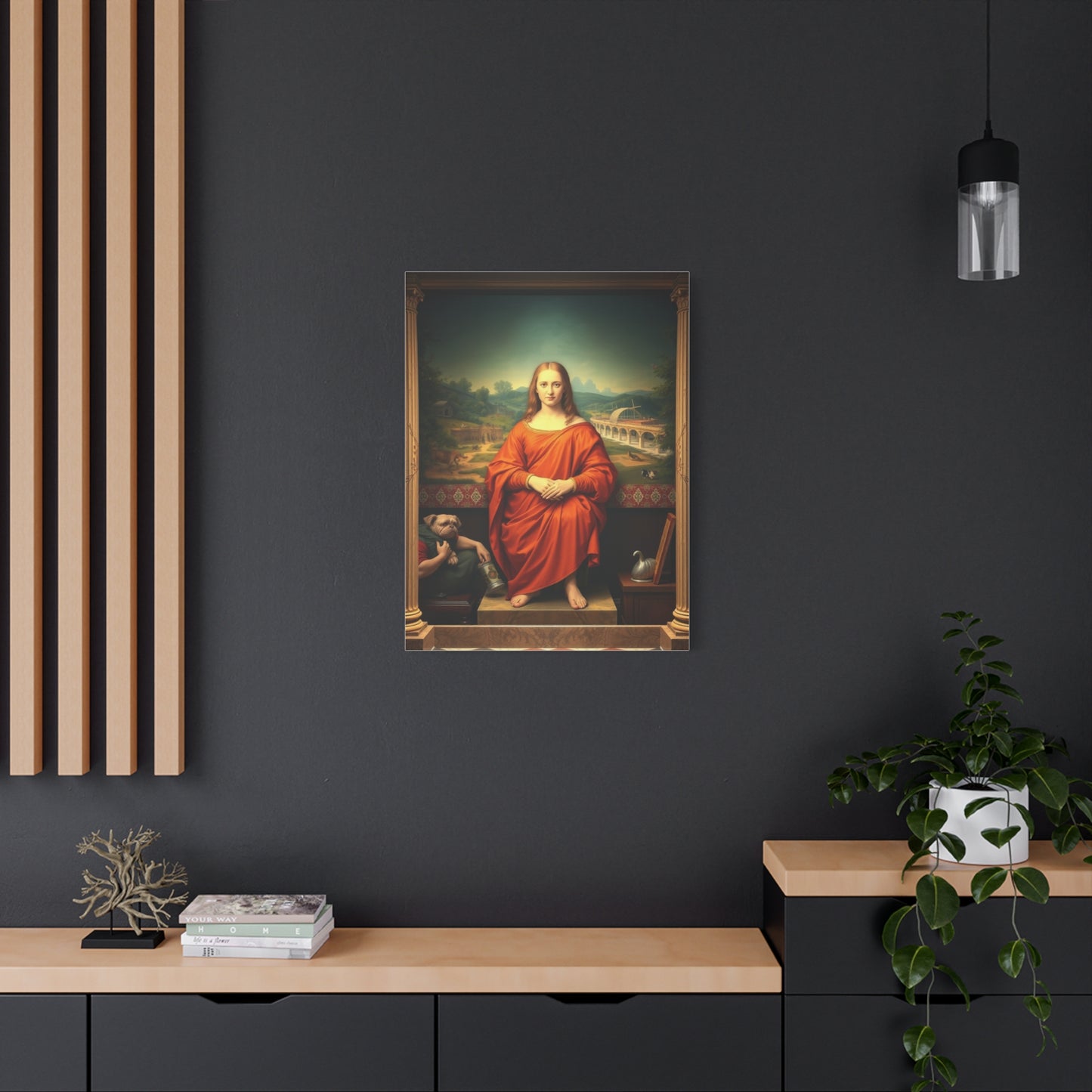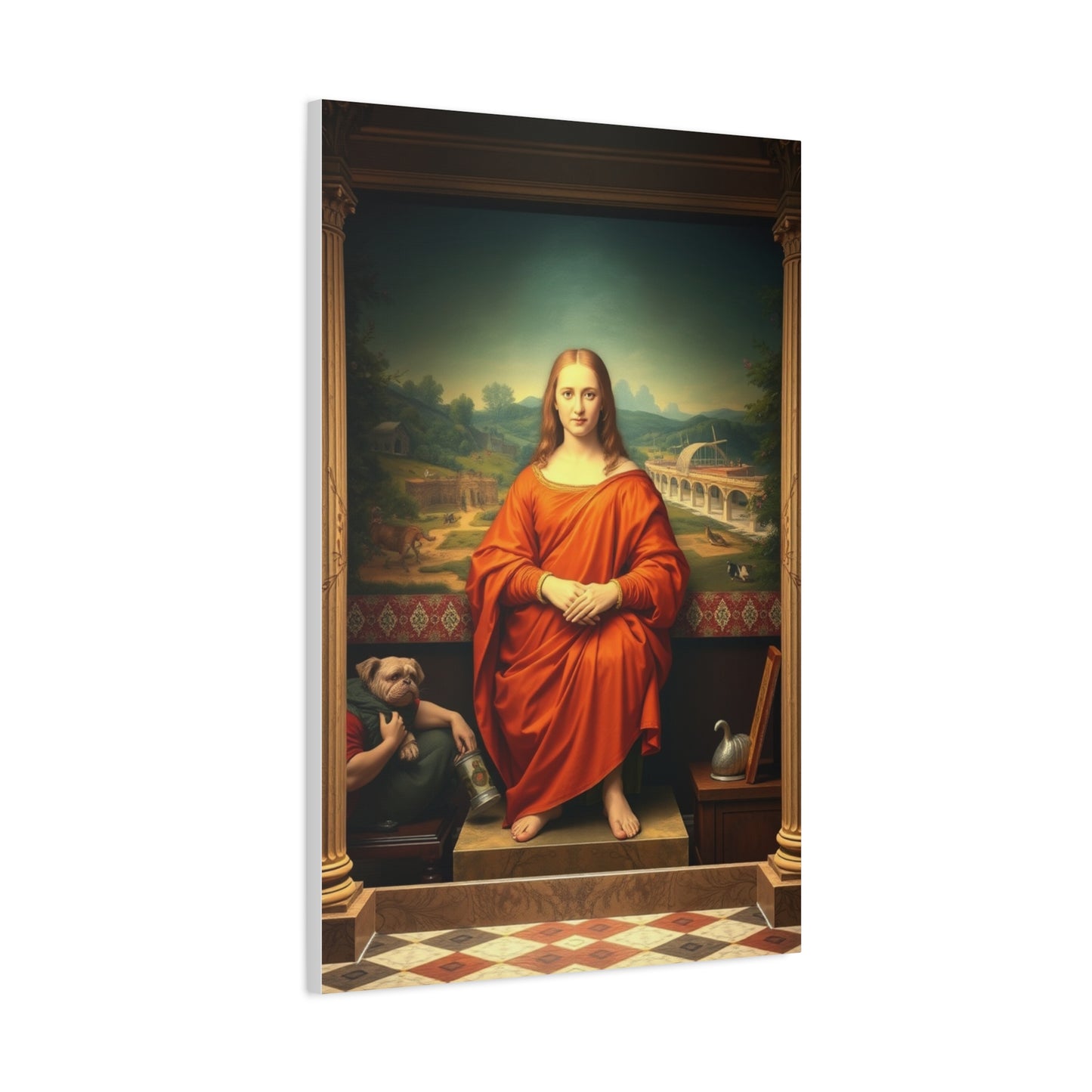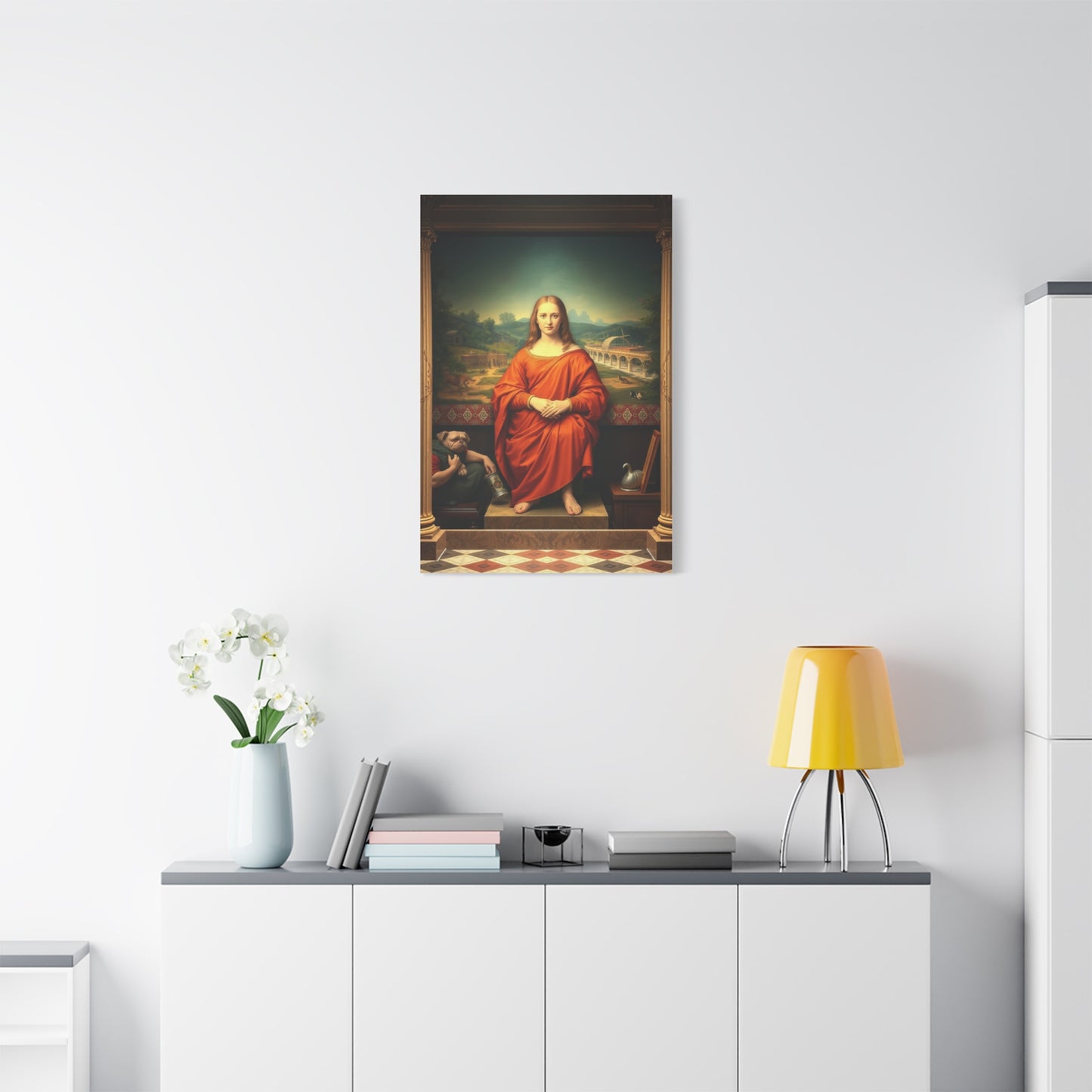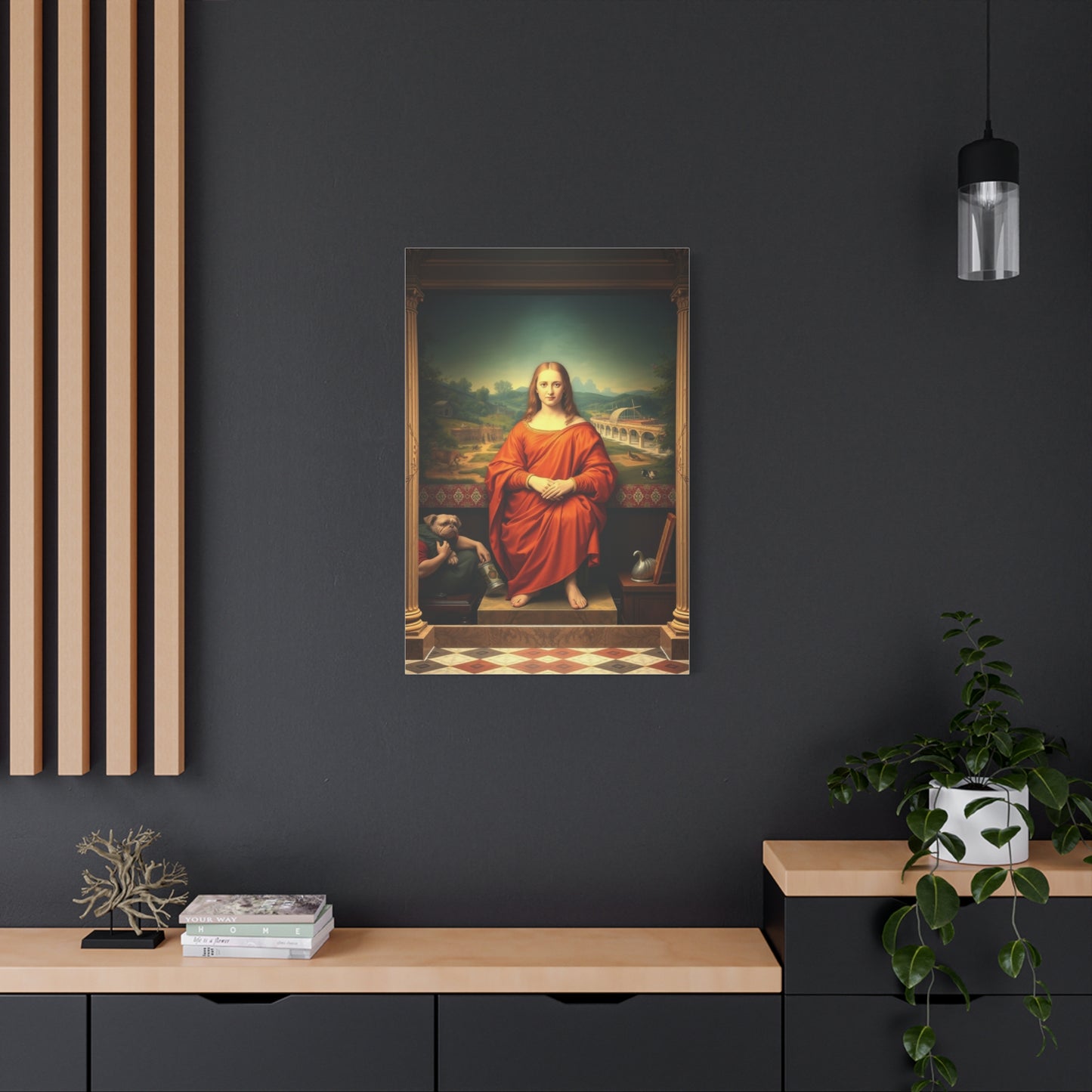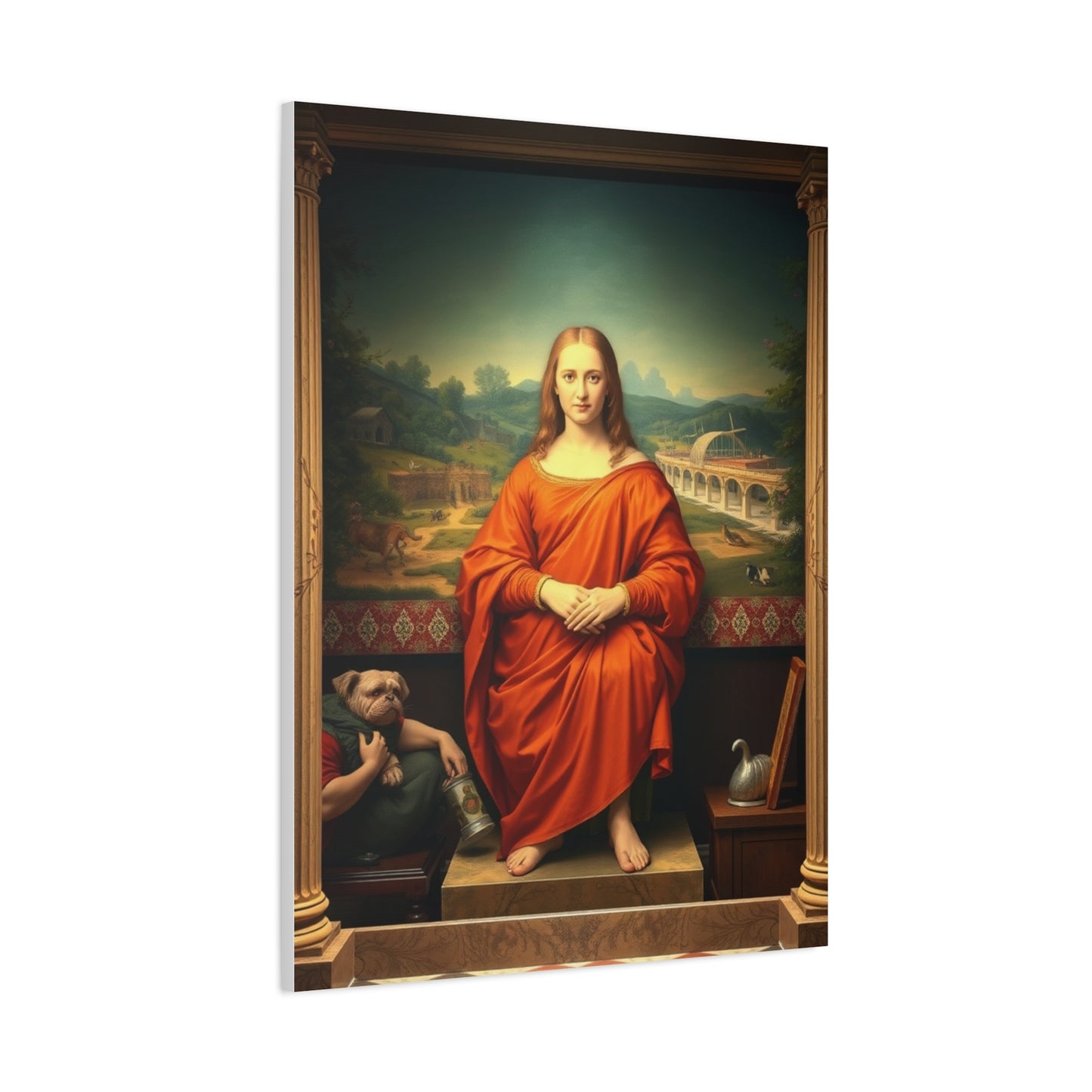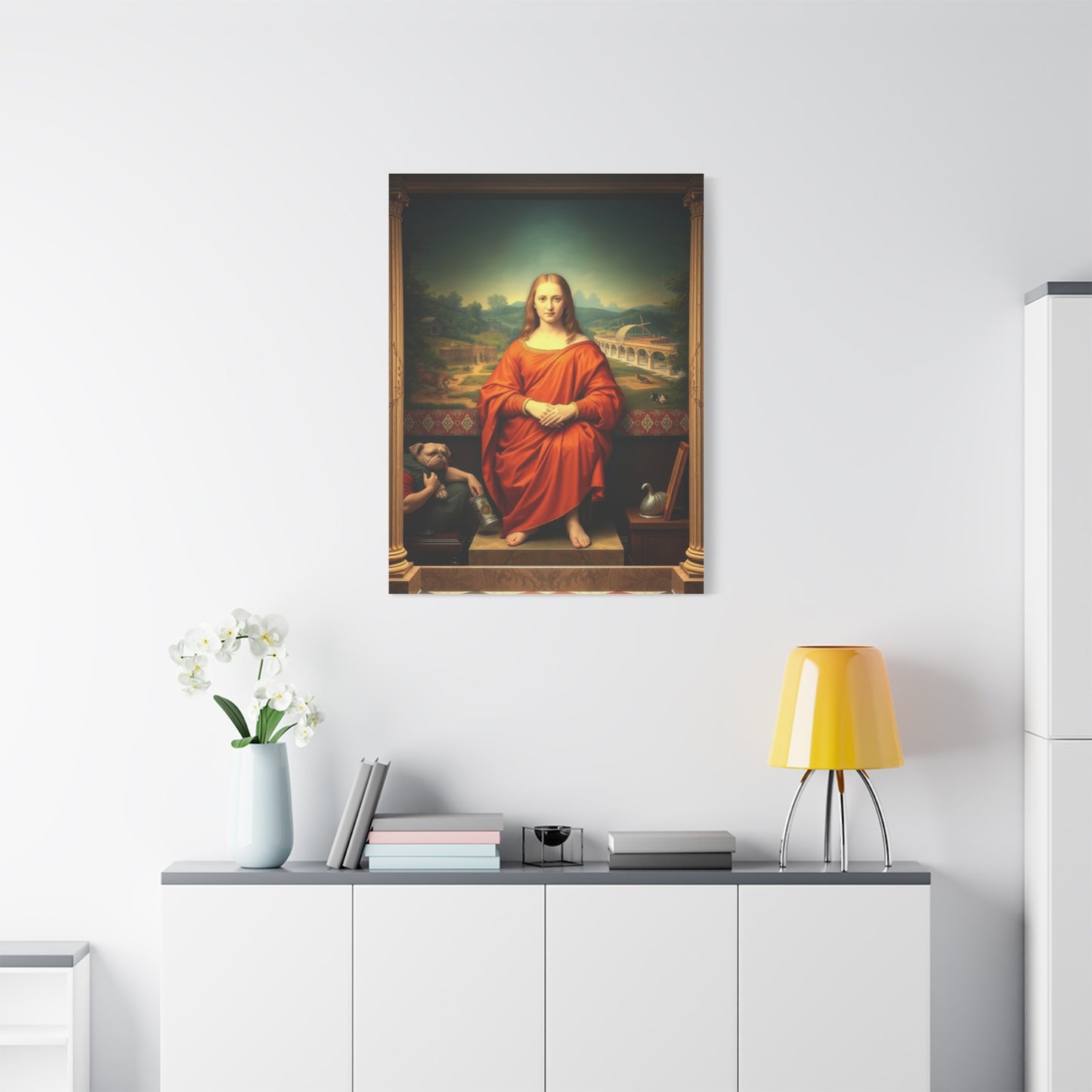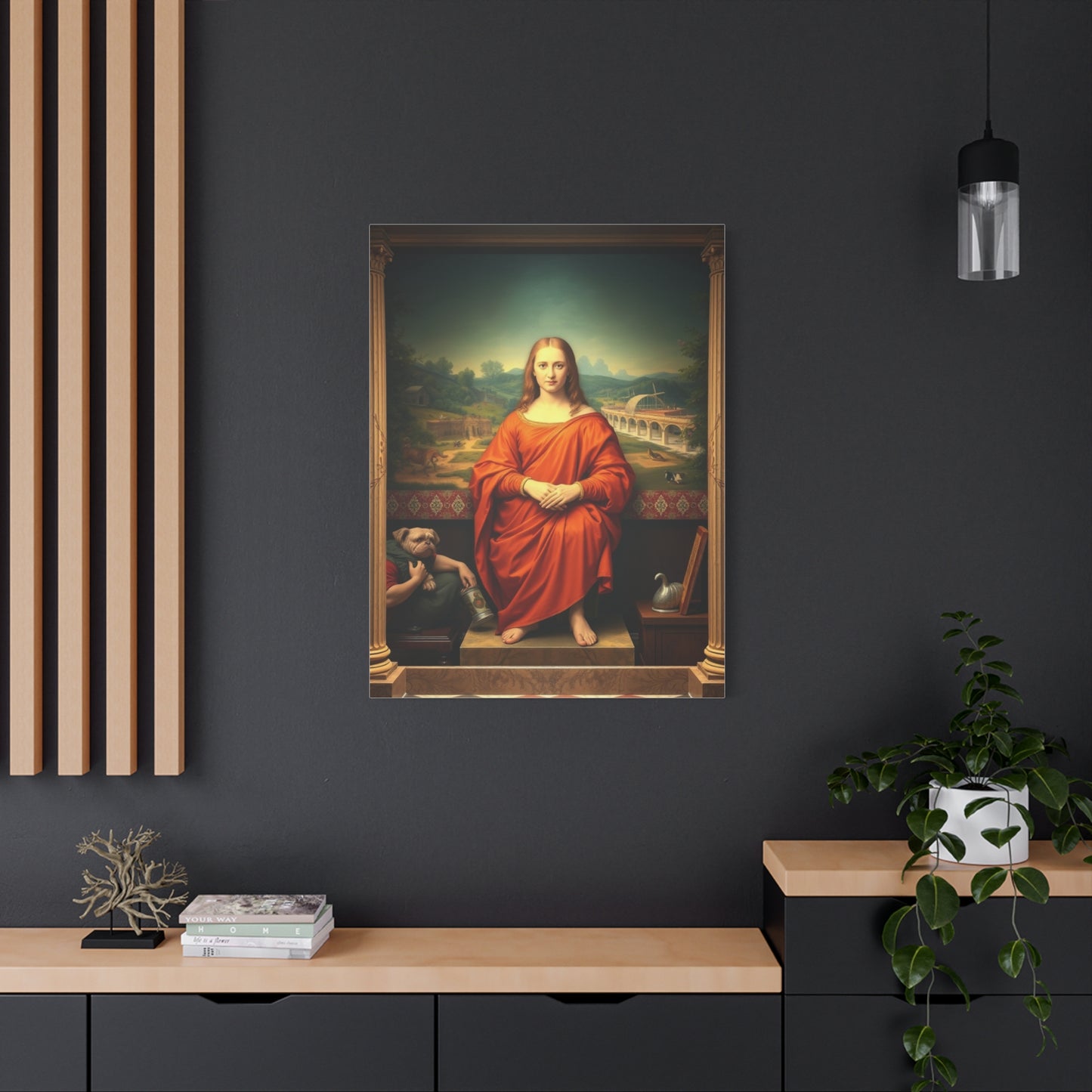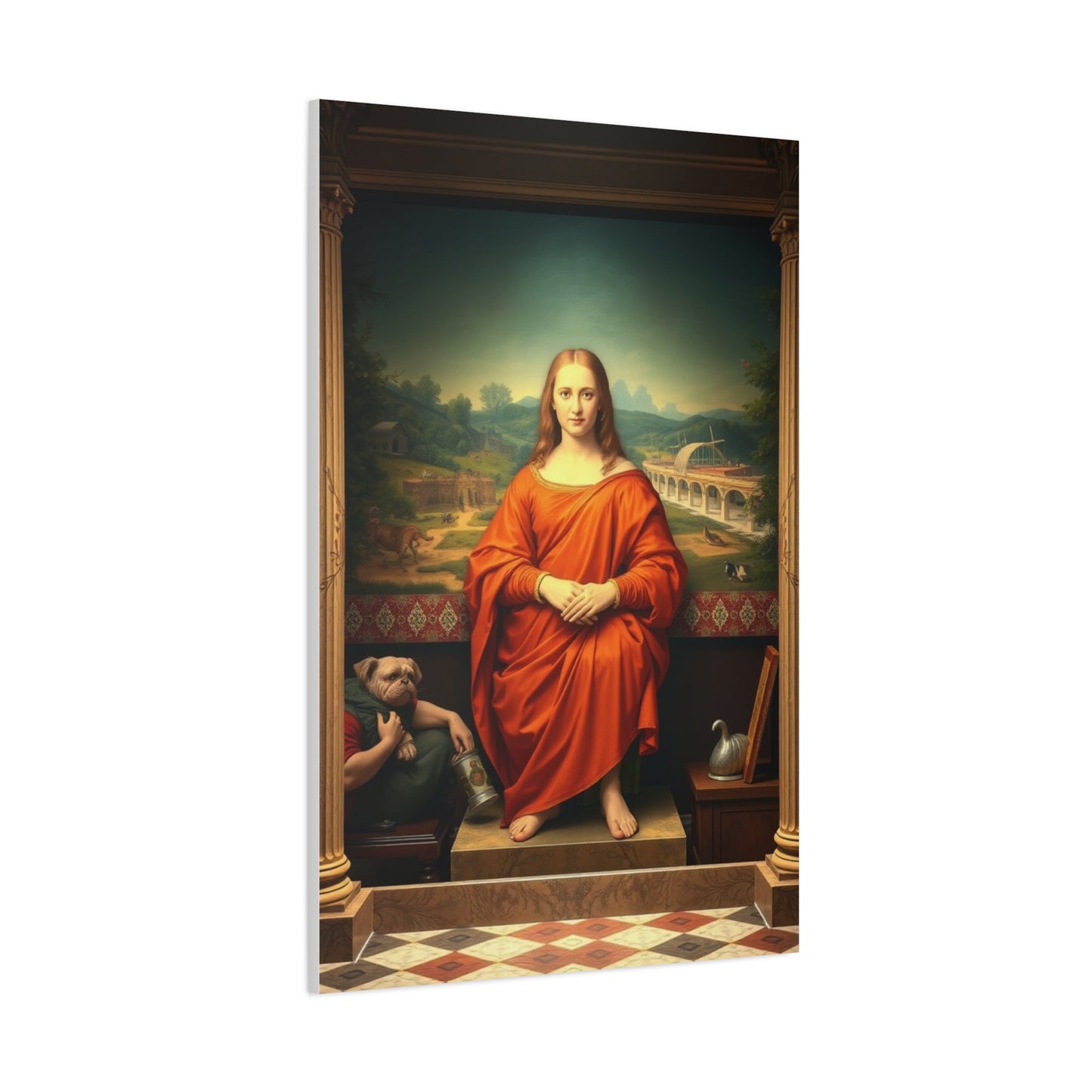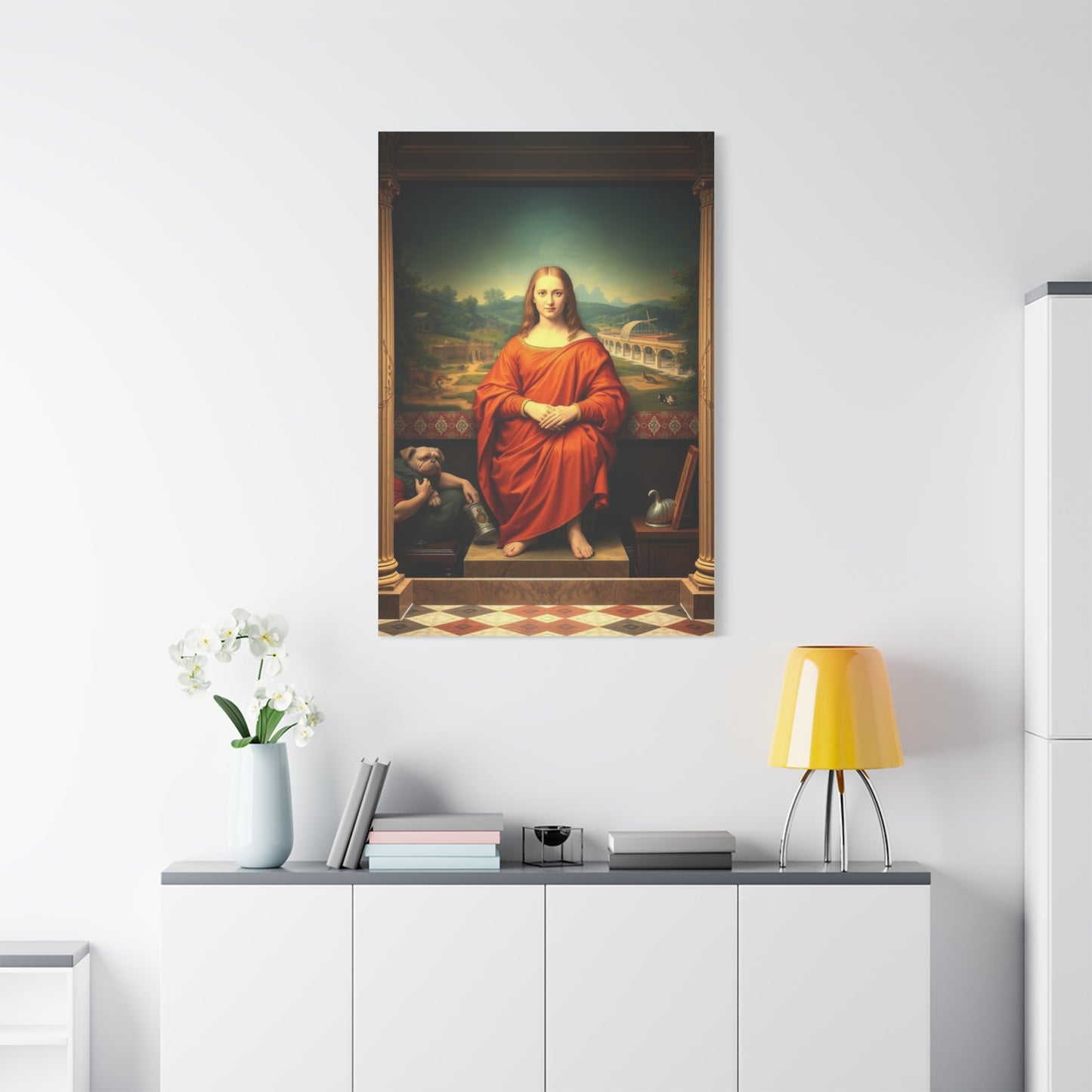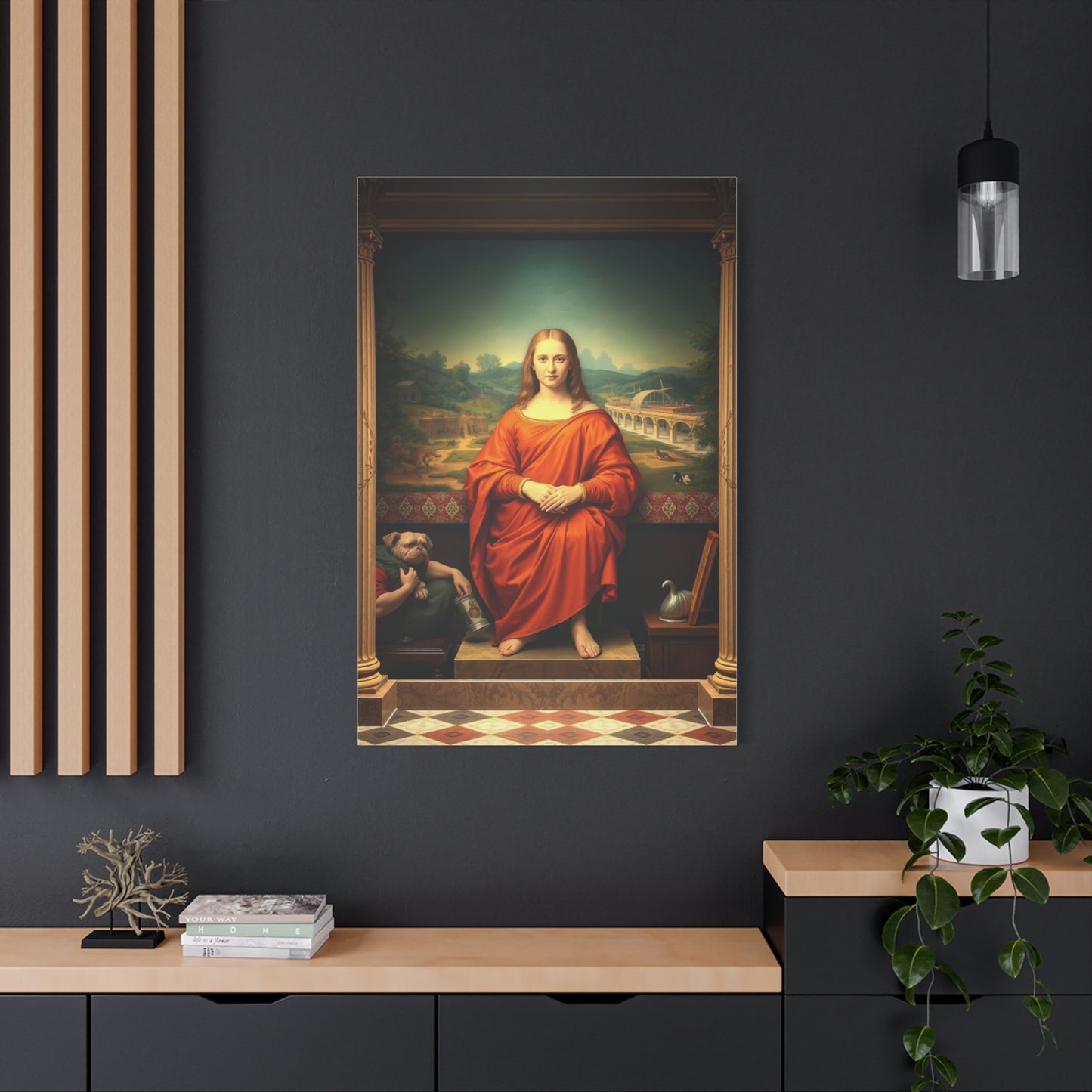Refined Classicism Wall Art: Bringing Timeless Beauty to Contemporary Homes
The world of artistic expression has witnessed countless movements and styles throughout history, yet few have maintained their enduring appeal quite like classical art. Today's homeowners seek to incorporate this timeless aesthetic into their living environments through carefully curated wall art that celebrates the refined elegance of classicism while adapting to modern sensibilities. This comprehensive exploration delves into the fascinating realm of classical-inspired wall art, examining how ancient artistic principles continue to enrich contemporary homes with their sophisticated charm and cultural significance.
Foundation of Classical Artistic Expression
Classical art emerged from the ancient civilizations of Greece and Rome, establishing foundational principles that continue to influence artistic creation today. These early artistic traditions emphasized harmony, proportion, and idealized beauty, creating visual languages that spoke to universal human experiences and aspirations. The mathematical precision evident in classical sculptures, the balanced compositions of ancient frescoes, and the symbolic richness of mythological narratives all contribute to the enduring power of this artistic tradition.
Greek artists of the 5th and 4th centuries BCE developed sophisticated understanding of human anatomy, perspective, and emotional expression that revolutionized artistic representation. Their pursuit of ideal beauty through mathematical ratios and proportional relationships created works that seemed to transcend mere physical representation, embodying philosophical concepts about perfection and harmony. Roman artists later expanded upon these Greek foundations, introducing greater realism and narrative complexity while maintaining the essential classical emphasis on dignity, order, and refined execution.
The revival of classical principles during the Renaissance demonstrated the timeless appeal of these artistic approaches, as master painters like Raphael and Michelangelo drew inspiration from ancient sources while developing new techniques and interpretations. This historical continuity reveals how classical aesthetics possess an inherent adaptability that allows them to speak meaningfully to different generations and cultural contexts. Contemporary wall art that embraces refined classicism continues this tradition of reinterpretation, making ancient wisdom accessible to modern audiences through fresh artistic expressions.
The influence of classical art extends beyond mere visual appeal to encompass deeper philosophical and cultural dimensions. Ancient artists understood art as a means of exploring fundamental questions about human nature, divine beauty, and the relationship between individual expression and universal truths. This philosophical depth gives classical-inspired wall art its profound resonance, offering viewers not just decorative beauty but also connections to broader cultural and intellectual traditions that have shaped Western civilization.
Architectural Elements as Artistic Inspiration
Classical architecture provides a rich vocabulary of decorative elements that translate beautifully into contemporary wall art. Columns with their distinctive orders—Doric, Ionic, and Corinthian—offer elegant vertical lines and proportional relationships that create visual harmony in any room. These architectural features, when rendered in paintings or prints, bring the grandeur of ancient temples and palaces into domestic environments without overwhelming residential scales.
Pediments, those triangular decorative elements crowning classical buildings, provide dynamic compositional frameworks for artistic narratives. Modern artists frequently adapt these architectural forms as structural elements within their compositions, using the triangular format to organize figural scenes or abstract arrangements that echo classical proportions. The resulting artworks carry the authoritative presence of monumental architecture while remaining perfectly scaled for residential display.
Ornamental details from classical buildings—such as acanthus leaves, egg-and-dart moldings, and dentil patterns—translate into sophisticated border designs and decorative accents that enhance the classical character of wall art. These elements can frame central images or serve as independent decorative motifs, adding layers of visual interest that reward careful observation. The intricate craftsmanship traditionally associated with such architectural details brings a sense of luxury and refinement to contemporary artistic interpretations.
The concept of classical orders extends beyond individual architectural elements to encompass entire systems of proportion and decoration that create unified aesthetic experiences. Wall art that incorporates these systematic approaches to design achieves the harmonious balance and dignified presence that characterize the best classical traditions. Modern homes can benefit from this systematic approach to visual organization, as classical proportional relationships create pleasing visual rhythms that enhance the overall coherence of residential environments.
Mythological Narratives in Contemporary Art
The rich mythology of ancient Greece and Rome provides endless inspiration for contemporary wall art that seeks to combine classical sophistication with engaging storytelling. These time-honored narratives explore fundamental human experiences—love, heroism, transformation, and destiny—through compelling characters and dramatic situations that remain relevant to modern audiences. Artists working in classical traditions find these mythological themes particularly rewarding because they offer opportunities to address universal concerns while drawing upon sophisticated iconographical traditions.
Stories of gods and goddesses provide particularly rich material for artistic interpretation, as these divine figures embody idealized human qualities while engaging in adventures that reveal the complexities of existence. Venus rising from the sea foam, Apollo driving his chariot across the sky, or Diana hunting with her sacred deer—these iconic scenes offer artists opportunities to explore themes of beauty, power, and natural harmony through visually striking compositions that work beautifully as wall art for contemporary homes.
Heroic narratives from classical mythology translate effectively into modern artistic interpretations because they address timeless themes of courage, sacrifice, and personal growth. The labors of Hercules, the journey of Odysseus, or the tragic fate of Icarus provide dramatic subject matter that engages viewers intellectually and emotionally while maintaining the dignity and refinement associated with classical artistic traditions. These stories offer rich possibilities for artistic development, allowing contemporary creators to explore both narrative complexity and visual beauty.
The transformation themes prevalent in classical mythology—such as Ovid's Metamorphoses—provide particularly compelling frameworks for artistic exploration. These stories of change and becoming speak to contemporary concerns about identity, growth, and adaptation while drawing upon established iconographical traditions that give them cultural depth and resonance. Wall art based on these transformational narratives can serve as powerful focal points in modern homes, inviting contemplation and conversation while contributing to sophisticated decorative schemes.
Portraiture Traditions and Human Dignity
Classical portraiture established enduring standards for representing human dignity and character through artistic means. Ancient sculptors and painters developed sophisticated approaches to capturing not just physical appearance but also inner qualities—intelligence, nobility, strength, and wisdom—that elevated their subjects beyond mere documentation to achieve genuine artistic significance. Contemporary wall art that draws upon these portrait traditions brings this same elevation of human dignity into modern residential contexts.
The idealized realism characteristic of classical portraiture offers modern artists a middle path between strict naturalism and pure abstraction. This approach allows for artistic interpretation and enhancement while maintaining recognizable human features and expressions that connect with viewers on an emotional level. The resulting portraits possess both artistic sophistication and human warmth, making them ideal choices for residential wall art that seeks to combine aesthetic refinement with personal resonance.
Classical portrait traditions emphasized the importance of pose, gesture, and symbolic attributes in conveying character and status. These compositional strategies remain effective in contemporary artistic applications, as they provide clear visual languages for communicating ideas about personality, achievement, and social role. Modern wall art that incorporates these traditional approaches to figural representation can achieve remarkable expressive power while maintaining the dignified restraint that characterizes the best classical traditions.
The group portrait traditions developed in classical art—from Roman family monuments to Renaissance religious scenes—offer contemporary artists models for creating complex compositions that celebrate human relationships and community bonds. These multi-figure arrangements require sophisticated understanding of compositional balance and narrative clarity, skills that distinguish truly accomplished classical-inspired artwork from more superficial decorative treatments.
Landscape and Natural Beauty in Classical Context
Classical approaches to landscape representation emphasized the harmony between human civilization and natural beauty, creating idealized visions of pastoral life that continue to appeal to contemporary sensibilities. These artistic traditions viewed nature not as wild and untamed but as a harmonious environment where human culture and natural processes complement each other in beautiful and meaningful ways. Contemporary wall art that draws upon these classical landscape traditions offers viewers peaceful refuges from modern urban complexity while maintaining sophisticated artistic standards.
The classical concept of the pastoral—embodied in literary works like Virgil's Eclogues and visual arts depicting shepherds, nymphs, and idealized countryside—provides rich inspiration for contemporary artists seeking to create wall art that celebrates natural beauty without abandoning cultural refinement. These pastoral themes allow for artistic exploration of seasonal changes, agricultural cycles, and the relationship between human activity and natural processes in ways that remain relevant to modern environmental consciousness.
Sacred landscapes from classical tradition—groves dedicated to particular deities, springs inhabited by nymphs, mountains sacred to the gods—offer contemporary artists opportunities to explore themes of spiritual connection to nature while drawing upon established iconographical traditions. These sacred natural environments provide frameworks for artistic compositions that combine landscape beauty with deeper symbolic meaning, creating wall art that functions both decoratively and contemplatively.
The garden traditions associated with classical culture—from Roman villa gardens to Renaissance interpretations of ancient prototypes—provide models for depicting cultivated nature that balances human design with natural growth and beauty. Contemporary wall art inspired by these garden traditions can bring the serenity and order of carefully planned landscapes into modern homes while maintaining connections to broader cultural traditions that celebrate the harmonious relationship between human creativity and natural abundance.
Color Theory and Classical Harmony
The sophisticated use of color in classical art provides valuable guidance for contemporary artists seeking to create wall art that embodies refined elegance and visual harmony. Ancient painters understood color not merely as decorative enhancement but as an integral element of artistic expression that could convey emotion, establish mood, and create compositional unity. These classical approaches to color continue to influence successful contemporary art because they address fundamental aspects of human visual perception and psychological response to color relationships.
The limited but carefully chosen color palettes favored in classical art—earth tones, muted jewel tones, and sophisticated neutrals—create visual environments that feel both luxurious and restful. These restrained approaches to color selection avoid the visual fatigue that can result from overly bright or conflicting color schemes, making classical-inspired wall art particularly suitable for residential environments where visual comfort and long-term enjoyment are important considerations.
Classical understanding of color temperature and its emotional associations provides contemporary artists with reliable methods for creating desired atmospheric effects in their work. Warm colors—reds, oranges, and golden yellows—can create feelings of welcome and intimacy, while cooler colors—blues, greens, and purples—establish more contemplative and serene moods. The classical tradition of using these temperature relationships systematically helps ensure that wall art contributes appropriately to the emotional character of residential environments.
The symbolic dimensions of color in classical art—purple for royalty, gold for divine presence, white for purity, red for passion or sacrifice—provide contemporary artists with established visual languages for conveying complex ideas and emotions through color choices alone. These symbolic associations operate below the level of conscious awareness for many viewers, creating subtle but powerful effects that enhance the overall impact of classical-inspired wall art without requiring explicit knowledge of iconographical traditions.
Compositional Principles and Visual Balance
The compositional strategies developed in classical art continue to provide reliable methods for creating visual harmony and aesthetic satisfaction in contemporary wall art. These time-tested approaches to organizing visual elements within rectangular formats address fundamental aspects of human perception and cognitive processing, making them as relevant today as they were in ancient times. Understanding and applying these classical compositional principles helps contemporary artists create wall art that achieves both immediate visual impact and long-term viewing satisfaction.
The golden ratio and related proportional systems used in classical art provide mathematical frameworks for creating pleasing relationships between different parts of artistic compositions. These proportional relationships, whether applied to the overall dimensions of artworks or to the internal arrangement of compositional elements, create visual harmony that feels naturally satisfying even to viewers who are unaware of the underlying mathematical principles. Contemporary wall art that incorporates these proportional systems achieves the same sense of balanced perfection that characterizes the greatest classical masterpieces.
Classical approaches to creating focal points and visual hierarchy within compositions help contemporary artists direct viewer attention effectively while maintaining overall compositional unity. These strategies—including the use of contrast, isolation, and directional elements to establish primary and secondary areas of interest—ensure that wall art functions successfully as both aesthetic object and communication medium. The resulting compositions guide viewer engagement in satisfying ways that reveal new details and relationships upon repeated viewing.
The classical understanding of negative space and its role in compositional success provides contemporary artists with powerful tools for creating visual breathing room and emphasis within their compositions. The strategic use of empty or simplified areas allows more complex or detailed elements to achieve maximum impact while preventing overall compositional confusion or visual overload. This classical appreciation for restraint and selectivity helps contemporary wall art achieve the refined elegance that distinguishes sophisticated artistic expression from mere decorative busyness.
Material Considerations for Classical-Inspired Art
The choice of materials and techniques used in creating classical-inspired wall art significantly impacts both the aesthetic character and long-term durability of artistic works. Traditional materials associated with classical art—such as oil paints, high-quality canvas, and archival papers—continue to offer advantages in terms of color richness, surface texture, and aging characteristics that enhance the classical character of contemporary artworks. Understanding these material considerations helps both artists and collectors make informed decisions about classical-inspired wall art.
Oil painting techniques, refined over centuries of classical artistic practice, provide unmatched opportunities for creating subtle color transitions, rich surface textures, and luminous color effects that distinguish high-quality classical-inspired art from more commercial decorative products. The slow-drying characteristics of oil paints allow artists to work and rework compositional elements until they achieve the refined perfection associated with classical artistic traditions. The resulting surface qualities—with their characteristic depth and luminosity—contribute significantly to the sophisticated presence that makes classical-inspired wall art particularly suitable for discerning residential environments.
High-quality printing techniques and archival materials now make classical-inspired art accessible to broader audiences without sacrificing visual quality or long-term stability. Digital reproductions of classical artworks and contemporary classical-inspired creations, when executed using museum-quality materials and processes, can maintain color accuracy and surface detail that rival original works while offering practical advantages in terms of cost and availability. These technological advances democratize access to classical artistic traditions without compromising artistic integrity.
Framing choices play crucial roles in presenting classical-inspired wall art effectively, as the frame selection can either enhance or detract from the classical character of the artwork itself. Traditional frame styles—with their gold leafing, carved ornamental details, and classical proportions—complement classical-inspired art by extending the visual vocabulary of the artwork into its immediate environment. However, contemporary frame approaches can also work successfully when they maintain appropriate scale relationships and avoid competing with the artwork for visual attention.
Scale and Proportional Considerations for Home Display
The successful integration of classical-inspired wall art into contemporary homes requires careful attention to scale relationships and proportional considerations that ensure artwork functions harmoniously within residential environments. Classical art traditions provide valuable guidance for these decisions, as ancient artists developed sophisticated understanding of how artwork size and proportional relationships affect viewer experience and environmental integration. Applying these classical insights helps homeowners select and display wall art that achieves maximum aesthetic impact while maintaining comfortable living environments.
Large-scale classical-inspired artworks can serve as dramatic focal points that anchor entire room compositions and establish sophisticated aesthetic character for residential environments. These substantial pieces require careful consideration of viewing distances, lighting conditions, and surrounding furnishings to achieve their full potential as environmental elements. When successfully integrated, large classical-inspired artworks bring the grandeur and authority of public art traditions into private residential contexts without overwhelming domestic scale relationships.
Medium-scale classical-inspired pieces offer versatility and adaptability that make them excellent choices for most residential applications. These works can function effectively as individual focal points or as components in larger wall arrangements, providing flexibility for changing decorative schemes and evolving personal tastes. The medium scale allows for detailed appreciation of classical artistic techniques and iconographical content while remaining manageable within typical residential room dimensions and furniture arrangements.
Small-scale classical-inspired artworks excel in creating intimate viewing experiences and in providing opportunities for developing sophisticated art collections over time. These pieces reward close examination and detailed study, making them particularly suitable for private areas like studies, bedrooms, or reading nooks where contemplative engagement with art enhances the function and character of residential environments. Carefully arranged groupings of small classical-inspired pieces can achieve cumulative impact that rivals single large works while offering greater flexibility for display arrangement and collection development.
Lighting Strategies for Classical Art Display
The proper illumination of classical-inspired wall art requires understanding both technical and aesthetic considerations that affect how artworks appear and function within residential environments. Classical art traditions developed sophisticated appreciation for how light affects the perception of color, texture, and compositional relationships, insights that remain relevant for contemporary display situations. Successful lighting strategies for classical-inspired wall art balance practical concerns about artwork preservation with aesthetic goals of presenting artworks at their visual best.
Natural lighting provides ideal illumination for many classical-inspired artworks because it reveals color relationships and surface textures as artists intended them to be seen. However, direct sunlight can damage artwork over time through fading and other degradation processes, requiring careful consideration of window placement, protective glazing, and seasonal light variation in planning display locations. Rooms with stable, indirect natural lighting often provide excellent environments for displaying classical-inspired wall art while minimizing conservation concerns.
Artificial lighting systems offer precise control over illumination conditions but require careful selection of light sources and fixture placement to avoid creating harsh shadows, reflective glare, or color distortion that detracts from classical artworks. LED lighting systems now provide museum-quality illumination that closely approximates natural daylight while offering energy efficiency and precise control over light levels and color temperature. These technological advances make it possible to achieve excellent display conditions for classical-inspired wall art in almost any residential environment.
Accent lighting techniques can enhance the dramatic impact of classical-inspired wall art by creating focused illumination that separates artworks from their surrounding environments and emphasizes their importance within room compositions. Picture lights, track systems, and concealed spotlights offer different approaches to accent lighting that can be selected based on artwork characteristics, room architecture, and desired aesthetic effects. The key to successful accent lighting lies in achieving adequate illumination levels without creating obvious light sources that compete with artworks for visual attention.
Cultural Significance and Historical Context
Understanding the cultural significance and historical context of classical artistic traditions enriches the experience of living with classical-inspired wall art and helps homeowners make informed decisions about artwork selection and display. Classical art emerged from specific historical circumstances and cultural values that continue to influence how these artistic traditions are perceived and interpreted in contemporary contexts. This cultural knowledge enhances appreciation for classical-inspired wall art while providing frameworks for understanding its continuing relevance to modern life.
The democratic ideals of ancient Athens, which emphasized individual excellence within community participation, established cultural values that continue to resonate in contemporary society and find expression in classical-inspired art that celebrates both individual achievement and social harmony. These political and philosophical foundations give classical artistic traditions their enduring relevance, as they address fundamental questions about individual identity, social responsibility, and the relationship between personal expression and cultural continuity that remain central to modern democratic societies.
The Roman contributions to classical tradition—including legal systems, administrative organization, and engineering achievements—expanded the Greek foundations to create more comprehensive cultural frameworks that influenced subsequent Western civilization. Classical-inspired wall art that draws upon Roman sources often reflects these broader cultural achievements, incorporating themes of order, justice, and civic responsibility that speak to contemporary concerns about community building and social organization.
The Renaissance revival of classical traditions demonstrated how ancient cultural achievements could inspire artistic renewal and cultural advancement in later historical periods. This precedent suggests that contemporary engagement with classical-inspired wall art continues a tradition of cultural renewal that uses historical achievements as foundations for addressing current challenges and opportunities. The Renaissance example shows how classical traditions can support innovation rather than mere imitation, encouraging contemporary artists and homeowners to engage creatively with classical sources.
The continuing influence of classical education in Western cultural traditions means that many people retain unconscious familiarity with classical themes, characters, and artistic approaches that enhance their response to classical-inspired wall art even without explicit knowledge of ancient sources. This cultural inheritance provides shared frameworks for understanding and appreciating classical-inspired art that facilitate communication and aesthetic enjoyment across different generations and social backgrounds.
Regional Variations in Classical Traditions
The spread of classical artistic traditions throughout the ancient world created regional variations that continue to influence contemporary classical-inspired wall art. Different geographical areas developed distinctive approaches to classical themes and techniques that reflect local materials, cultural preferences, and historical circumstances. Understanding these regional variations provides contemporary artists and collectors with richer palettes of classical influences to draw upon in creating and selecting wall art that reflects sophisticated appreciation for the diversity within classical traditions.
Greek regional traditions—from the idealized perfection of Athenian art to the more naturalistic approaches favored in Hellenistic centers like Alexandria—offer different models for contemporary artists seeking to create classical-inspired wall art. Athenian traditions emphasize mathematical harmony and idealized beauty, while Hellenistic approaches incorporate greater emotional expression and dramatic movement. These different emphases provide contemporary artists with choices about which aspects of classical tradition best serve their artistic goals and audience preferences.
Roman provincial art adapted classical traditions to local circumstances and cultural preferences, creating hybrid styles that combined classical sophistication with regional character. These provincial variations demonstrate how classical traditions can be successfully adapted to different cultural contexts without losing their essential character or aesthetic power. Contemporary artists working in classical-inspired traditions can learn from these historical examples about how to maintain classical integrity while addressing contemporary circumstances and audience needs.
Byzantine art traditions, which preserved and transformed classical heritage during the medieval period, offer models for how classical artistic principles can be maintained and developed under changing cultural circumstances. The Byzantine emphasis on spiritual content and symbolic meaning provides contemporary artists with examples of how classical techniques and compositional strategies can serve different thematic purposes while maintaining their essential aesthetic effectiveness.
The Islamic preservation and development of classical scientific and artistic knowledge during the medieval period created additional variations in classical traditions that influence contemporary artistic possibilities. Islamic geometric patterns, calligraphy, and architectural ornament offer sophisticated aesthetic approaches that can complement classical figural traditions in contemporary wall art while demonstrating the universal appeal of classical principles of harmony, proportion, and refined craftsmanship.
Classical Aesthetic Experience
The psychological impact of classical-inspired wall art operates through multiple channels that affect both conscious appreciation and unconscious response to aesthetic stimuli. Research in environmental psychology and neuroaesthetics reveals that classical artistic principles align with fundamental aspects of human cognitive processing and emotional response, explaining why classical-inspired art continues to provide satisfying aesthetic experiences across different cultural contexts and historical periods. Understanding these psychological dimensions helps homeowners appreciate why classical-inspired wall art can contribute meaningfully to residential comfort and satisfaction.
The mathematical relationships inherent in classical proportional systems correspond to pattern recognition capabilities that evolved in human cognitive development, making classical compositions feel naturally satisfying even to viewers who are unaware of the underlying mathematical principles. These cognitive responses to harmonic relationships operate below the level of conscious awareness but contribute significantly to overall aesthetic satisfaction and environmental comfort. Classical-inspired wall art that incorporates these proportional relationships can create positive psychological effects that enhance residential living quality.
The narrative content typical of classical-inspired art engages human psychological needs for meaning and story that extend beyond purely visual aesthetic experience. Classical mythological themes, historical subjects, and allegorical content provide frameworks for contemplation and interpretation that exercise cognitive capabilities while offering emotional satisfaction through identification with heroic characters and noble themes. This narrative dimension gives classical-inspired wall art psychological depth that supports long-term engagement and appreciation.
The cultural associations connected with classical artistic traditions activate psychological responses related to cultural identity, educational achievement, and social status that can enhance self-concept and environmental satisfaction. Living with classical-inspired wall art connects residents to broader cultural traditions and educational heritage that provide psychological benefits related to cultural continuity and intellectual accomplishment. These associations can contribute to residential environments that support positive self-concept and social confidence.
The meditative qualities inherent in classical artistic approaches—including balanced compositions, harmonious color relationships, and refined execution—promote psychological states conducive to relaxation and contemplation. The visual order and aesthetic harmony characteristic of classical-inspired art can serve as antidotes to contemporary environmental complexity and digital overstimulation, providing psychological refuges that support mental health and emotional well-being in residential contexts.
Contemporary Artists and Classical Revival
The contemporary art world includes numerous artists who draw inspiration from classical traditions while developing personal artistic voices that speak to current cultural concerns and aesthetic sensibilities. These contemporary classical artists demonstrate how ancient artistic principles can support innovative artistic expression rather than mere historical imitation. Their work provides excellent examples of how classical-inspired wall art can achieve both historical resonance and contemporary relevance, making it particularly suitable for modern homes that seek to balance tradition with innovation.
Figurative painters working in contemporary classical traditions often combine traditional techniques with modern subject matter, creating artworks that demonstrate the continuing relevance of classical approaches to human representation. These artists understand classical drawing and painting methods while addressing contemporary concerns about identity, relationships, and social issues. Their work shows how classical technical expertise can enhance rather than constrain artistic expression, producing wall art that achieves both historical sophistication and current cultural relevance.
Contemporary artists specializing in mythological and allegorical subjects bring fresh interpretations to classical themes while maintaining the symbolic richness and narrative complexity that distinguish classical artistic traditions. These artists often reinterpret traditional stories and characters in ways that address contemporary concerns about gender, power, and social justice while preserving the universal human themes that give classical narratives their enduring appeal. Their work provides excellent choices for homeowners seeking classical-inspired wall art that combines traditional beauty with contemporary intellectual engagement.
Landscape painters working in classical traditions adapt pastoral and sublime landscape conventions to contemporary environmental awareness and ecological concerns. These artists maintain classical approaches to compositional organization and color harmony while addressing modern themes related to environmental preservation and sustainable living. Their work demonstrates how classical aesthetic principles can support contemporary environmental consciousness while providing the visual beauty and psychological comfort that make residential wall art successful.
Portrait painters continuing classical traditions adapt historical approaches to contemporary subjects and social concerns, creating artworks that combine traditional dignity with modern psychological insight. These artists understand how classical compositional strategies and technical approaches can enhance rather than constrain individual expression, producing portraits that achieve both classical refinement and contemporary relevance. Their work provides excellent examples of how classical-inspired wall art can celebrate individual achievement while maintaining connection to broader cultural traditions.
Investment Considerations for Classical Art
The market for classical-inspired wall art includes both original contemporary works and high-quality reproductions of historical masterpieces, each offering different advantages and considerations for homeowners interested in building art collections or making sound aesthetic investments. Understanding these market dynamics helps buyers make informed decisions about classical-inspired wall art that balance aesthetic goals with practical and financial considerations.
Original contemporary works by established artists working in classical traditions often appreciate in value over time while providing the satisfaction of supporting living artists and acquiring unique artistic objects. These works typically require higher initial investments but offer potential financial returns as well as aesthetic rewards. Collectors interested in original contemporary classical art should research artist backgrounds, exhibition histories, and critical recognition to identify works with strong potential for long-term value appreciation.
High-quality reproductions of classical masterpieces provide access to important historical artworks at affordable prices while offering excellent decorative and educational value for residential display. Modern reproduction techniques can achieve remarkable accuracy in capturing the color, texture, and compositional subtleties of original masterpieces, making museum-quality art accessible for home display. These reproductions serve educational functions by familiarizing viewers with important cultural achievements while providing sophisticated aesthetic enhancement for residential environments.
Limited edition prints and multiples by contemporary artists working in classical traditions offer middle-ground options that combine reasonable prices with potential collector value. These works typically feature higher production values than mass-market reproductions while remaining more affordable than unique original works. Limited editions by recognized artists can appreciate in value over time while providing immediate aesthetic satisfaction and cultural enrichment for residential display.
The authentication and condition assessment of classical-inspired artworks require specialized knowledge that buyers should consider when making significant purchases. Reputable dealers and auction houses provide expertise and guarantees that protect buyers from fraud or misrepresentation, while also offering guidance about market values and investment potential. Professional appraisal services can provide independent assessments of artwork authenticity, condition, and market value for insurance and estate planning purposes.
Seasonal and Thematic Arrangements
The versatility of classical-inspired wall art allows for seasonal displays and thematic arrangements that can refresh residential environments while maintaining overall aesthetic coherence and cultural sophistication. Classical artistic traditions include themes and subjects appropriate for different seasons and occasions, providing homeowners with opportunities to vary their art displays while preserving the refined character that classical inspiration provides.
Spring themes in classical art—including pastoral scenes, mythological stories of renewal and rebirth, and celebrations of natural abundance—provide excellent choices for seasonal art displays that welcome warmer weather and longer daylight hours. Classical depictions of Persephone's return from the underworld, Venus and her garden companions, or idealized pastoral landscapes can bring the optimism and energy of spring into residential environments while maintaining the sophisticated aesthetic standards associated with classical artistic traditions.
Summer themes in classical-inspired art often feature outdoor activities, harvest celebrations, and mythological stories set in natural environments that reflect the season's emphasis on outdoor living and natural abundance. Classical scenes of Diana hunting, pastoral picnics, or Mediterranean landscape views can enhance residential environments during summer months while providing visual coolness through appropriate color choices and compositional emphasis on natural beauty and outdoor recreation.
Autumn themes in classical art frequently explore concepts of maturity, wisdom, and the productive harvest that follows careful cultivation, making them particularly appropriate for residential environments that serve as refuges from busy professional lives. Classical depictions of Minerva, harvest deities, or mature landscape scenes can provide psychological comfort and cultural enrichment during autumn months while maintaining the visual warmth and richness appropriate for indoor living as outdoor activities diminish.
Winter themes in classical-inspired art often emphasize indoor cultural activities, philosophical contemplation, and the preservation of knowledge and tradition during dormant natural periods. Classical subjects featuring libraries, scholarly pursuits, or indoor celebrations can enhance residential comfort during winter months while providing intellectual stimulation and cultural connection that support indoor living and contemplative activities.
Room-Specific Applications and Considerations
Different residential rooms serve different functions and create different psychological environments, requiring thoughtful consideration of how classical-inspired wall art can best contribute to each area's specific purposes and character. Classical artistic traditions provide rich resources for addressing these varied residential needs while maintaining overall aesthetic coherence and cultural sophistication throughout the home environment.
Living rooms and formal entertaining areas benefit from classical-inspired wall art that creates sophisticated conversation pieces while establishing the cultural character and aesthetic standards of the household. Large-scale historical or mythological scenes, impressive landscape compositions, or significant portrait works can anchor these public areas while providing talking points for guests and expressions of the homeowners' cultural interests and aesthetic preferences. The classical emphasis on dignity and refinement makes such art particularly appropriate for formal entertaining contexts.
Dining rooms provide excellent opportunities for classical-inspired art that enhances the social and cultural dimensions of shared meals while creating visually appealing environments for extended conversation and relaxation. Classical themes related to abundance, celebration, and social harmony—such as harvest scenes, mythological banquets, or pastoral celebrations—can contribute to dining room atmospheres that encourage conviviality and cultural appreciation. The classical tradition of associating art with intellectual discourse makes dining rooms natural locations for classical-inspired wall art that supports both aesthetic pleasure and social interaction.
Private areas like bedrooms and personal studies allow for more intimate selections of classical-inspired wall art that reflect personal interests and provide private aesthetic satisfaction rather than public display. Smaller-scale works featuring personal themes—such as portraits, pastoral scenes, or contemplative subjects—can create peaceful environments that support rest, reflection, and personal renewal. The classical emphasis on individual cultivation and personal refinement makes private areas excellent contexts for classical-inspired art that supports personal development and aesthetic education.
Home offices and libraries benefit from classical-inspired wall art that reinforces themes of learning, achievement, and intellectual tradition while creating motivating environments for professional and personal development activities. Classical subjects featuring scholarly pursuits, allegorical representations of knowledge and wisdom, or portraits of cultural achievements can create inspirational contexts for productive work while connecting contemporary professional activities to broader cultural traditions of intellectual accomplishment and civic contribution.
Maintenance and Conservation Practices
Proper care and maintenance of classical-inspired wall art ensures long-term preservation and continued aesthetic satisfaction while protecting investment values and cultural significance. Understanding appropriate conservation practices helps homeowners maintain their classical-inspired art collections in excellent condition while avoiding damage that could compromise both aesthetic appeal and financial value.
Environmental control represents the most important factor in preserving classical-inspired wall art, as temperature fluctuations, humidity changes, and exposure to direct sunlight can cause gradual damage that accumulates over time. Stable temperature and humidity levels prevent the expansion and contraction cycles that stress canvas, paper, and frame materials, while filtered lighting protects colors from fading and prevents photochemical damage. Modern climate control systems and UV-filtering window treatments provide excellent protection for residential art collections without requiring museum-level environmental controls.
Regular cleaning and inspection routines help identify potential problems before they become serious conservation issues while maintaining the visual appeal that makes classical-inspired wall art effective residential decoration. Gentle dusting with appropriate materials removes surface dirt that can accumulate over time, while periodic professional cleaning can address more substantial maintenance needs. Regular inspection allows early identification of problems like frame loosening, canvas sagging, or surface staining that can be addressed more easily and economically when caught early.
Professional conservation services provide expertise and specialized treatments that extend the life of valuable classical-inspired artworks while maintaining their aesthetic integrity and financial value. Qualified conservators can address specific problems like paint loss, canvas damage, or frame deterioration using appropriate materials and techniques that preserve original artistic intent while stabilizing physical condition. Establishing relationships with reputable conservation professionals provides access to expert advice and treatment services when needed.
Insurance and documentation considerations become increasingly important as classical-inspired art collections grow in size and value, requiring systematic approaches to record keeping and risk management. Professional appraisals provide current market valuations for insurance purposes while documenting condition and authenticity. Photographic documentation creates permanent records of artwork condition and appearance that support insurance claims and conservation decisions. Proper insurance coverage protects against loss, damage, and theft while providing financial resources for professional conservation treatment when needed.
Educational and Cultural Benefits
Living with classical-inspired wall art provides ongoing educational and cultural benefits that extend beyond immediate aesthetic pleasure to include intellectual development, cultural awareness, and personal enrichment opportunities. The rich historical and cultural contexts associated with classical artistic traditions create learning environments that support lifelong education and cultural appreciation while enhancing the residential living experience through meaningful aesthetic engagement.
Daily exposure to classical artistic themes, techniques, and cultural references provides informal educational experiences that gradually build knowledge and appreciation of important cultural traditions. Family members of all ages benefit from regular contact with classical art through unconscious absorption of cultural knowledge, aesthetic standards, and historical awareness that contribute to general education and cultural literacy. This passive educational process supplements formal education while creating shared cultural references that enhance family communication and cultural transmission.
Classical-inspired wall art provides excellent starting points for more focused educational activities and cultural exploration that can deepen appreciation while expanding knowledge of history, literature, and artistic traditions. Mythological subjects invite research into ancient stories and their continuing cultural influence, while historical themes encourage exploration of past civilizations and their achievements. Artistic techniques and styles provide entry points for studying art history and aesthetic development that enhance appreciation for cultural achievements and creative expression.
The presence of classical-inspired art in residential environments creates natural opportunities for cultural conversations and educational discussions that benefit family members and guests alike. Artwork provides talking points that encourage intellectual engagement and cultural exchange while demonstrating the homeowners' commitment to educational and cultural values. These conversations contribute to residential environments that support intellectual growth and cultural development for all residents and visitors.
The connection between classical artistic traditions and broader cultural achievements in literature, philosophy, music, and science creates opportunities for interdisciplinary learning that enriches understanding of cultural development and intellectual history. Classical art provides visual entry points for exploring related cultural achievements while demonstrating the interconnected nature of human cultural expression across different disciplines and historical periods.
Conclusion:
In conclusion, refined classicism wall art offers a remarkable way to bridge the elegance of the past with the fresh energy of contemporary living spaces. By incorporating timeless motifs, balanced compositions, and subtle sophistication, this style of art enriches modern homes with a sense of enduring beauty and cultural depth. It transcends fleeting trends to deliver pieces that remain relevant and inspiring through the years, making it an excellent investment for those who appreciate both artistry and heritage.
Refined classicism draws on the principles of harmony, proportion, and grace that defined classical art, architecture, and design. When translated into wall art, these qualities manifest as works that are meticulously composed, understated yet impactful, and imbued with a quiet confidence. Whether through elegant figures, architectural elements, or nature-inspired motifs, the art evokes a sense of order and balance that brings tranquility to any room. This calming influence can help anchor spaces in a hectic world, making refined classicism an ideal choice for living rooms, studies, bedrooms, and even entryways.
Moreover, refined classicism’s adaptability is one of its greatest strengths. The clean lines and timeless subjects allow the artwork to complement a broad spectrum of interior design styles—from minimalist modern and Scandinavian to transitional and even eclectic décors. It provides a sophisticated counterpoint to bold, colorful, or highly textured furnishings without competing for attention. In this way, it harmonizes the overall aesthetic and adds a layer of depth and meaning to the space.
The materials and techniques used in refined classicism wall art further enhance its appeal. Often rendered in muted color palettes, delicate brushwork, and fine detailing, these pieces showcase masterful craftsmanship that invites close appreciation. Whether displayed as a large focal point or as part of a curated collection, refined classicism artworks reward viewers with subtle nuances and timeless charm.
Beyond their visual appeal, these artworks serve as cultural touchstones that connect homeowners to a rich artistic lineage. They evoke values such as beauty, wisdom, and balance—ideals that resonate across generations and cultures. Bringing refined classicism into your home is not merely a design choice but an homage to these enduring principles.
Ultimately, refined classicism wall art elevates contemporary homes by infusing them with timeless beauty and thoughtful elegance. It creates spaces that feel both grounded in tradition and alive with modern sensibility, offering an enduring source of inspiration and visual harmony for years to come.

















